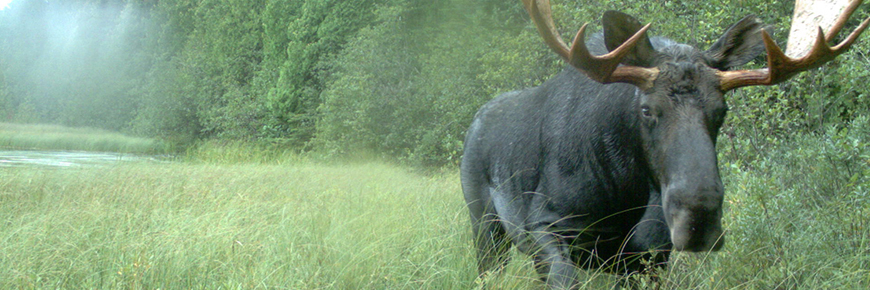
Moose (Alces alces)
Pukaskwa National Park
The moose is the world's largest living member of the deer family (Cervidae), standing almost two metres at the shoulder. It is characterized by its large size, long face with overhanging muzzle, dewlap or 'bell' under the throat, long legs and short tail. The moose is usually dark brown to black, with beige or gray lower legs. The moose is most active at night but can be seen any time of day.
It eats herbaceous and aquatic plants in the summer and the bark, twigs and buds of woody plants in the winter.
The male moose, or bull, has large, palmate antlers. They drop their antlers in the fall after the mating season and re-grow them over three to five months in the spring and summer.
The female moose, or cow, gives birth to one or two calves in May to June. A moose can live up to 20 years in the wild.
Moose status at Pukaskwa
There are about 150 moose in Pukaskwa National Park. Calves make up about 8% of the population, and there are approximately 11 cows for every 10 bulls.
Related links
- Date modified :